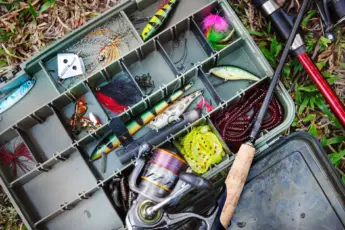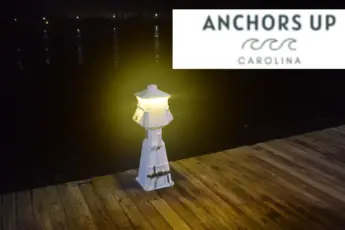Trolling is highly effective for catching freshwater and saltwater fish in Georgia, South Carolina, and North Carolina. Fish that remain deep in the water column are challenging to reach with dragging baits under power, and anglers must utilize weights, downriggers, big-lipped fishing plugs, or lead fishing lines. Here are 7 important facts about using a lead core fishing line to reach fish deep below the water’s surface.
What Is Lead Core Fishing Line
Lead fishing line is precisely like it sounds, but most of us are unfamiliar with the name. Unlike monofilament or braided line, lead line contains lead positioned in the middle of the line to serve as a weight when deploying from a reel.
The center of the line is equipped with a thin layer of flexible lead, allowing it to remain flexible by bending and spooling back onto the reel when retrieved. Outside of the lead is a nylon wrapping to prevent water, whether fresh or salt, from penetrating the metal center.
Lead cores are color coating allowing the angler to count the distance the line is deployed from the reel and into the water. The line changes color approximately every ten yards.
As the line fishing lure is dropped into the water and the reel is flipped into free spool, it is critical to count the line paid out. The line paid out determines the depth the fishing lure is presented. Anglers monitor where fish are situated on depth finders and must deploy the bait to that specific level to increase the likelihood of strikes.
The more line paid out, the deeper the lure dives. Lastly, anglers choose between varying pound test ratings depending on the type of fish they are targeting.
What Is Lead Core Fishing Line Used For
Lead core line is used for trolling from a watercraft in freshwater or saltwater. The weighted line drops lures to deeper depths compared to monofilament and braid without the aid of weights or downriggers.
How Deep Can You Fish With Lead Core Line
When lead line fishing, expect the fishing lead line to fall 5-7 feet per ten yards of color. A 100-yard spool averages a trolling depth of 60 feet compared to a 200-yard spool reaching 120 feet. However, trolling speed impacts the number of feet the line falls per ten yards.
When trolling at a rapid rate, the line remains higher in the water column than at slow trolling speeds.
Can You Cast Lead Core Fishing Line
Due to the weight of lead line for fishing, the lead core fishing line is not capable of being casted. Instead the spool is opened while trolling out the line to fall free from the spool, through the rod guides, and into the water.
How Much Backing Do You Need For Lead Core Line
First, it is essential to understand what exactly backing is and its purpose. Let’s face it, a lead core line is heavy, and 300-400 yards of it spooled on a reel would make the rod and reel combination equal to the weight of a dumbbell.
When spooling a reel with line, the first application is a monofilament or braided line. This section of the line connects to the outer portion of leadcore line.
Once the line is spooled with backing and lead line, depending on the depth the angler is attempting to fish; the backing will be reached when deploying the fishing line. Additionally, hard-fighting fish will pull drag will into the backing.
How Do You Rig Lead Core Line
When rigging lead core, the bitter end of the lead line requires a leader. Select the leader line weight and attach the two ends by utilizing an Albright knot. An Albright knot is used when joining two fishing lines of unequal diameters. We recommend a forty to a fifty-foot section of leader line.
Once the leader is in place, connect the fishing lure of choice. Once the lure is connected drop the bait, leader, and line into the water for trolling.
How Do You Spool A Lead Core Line
When fishing with lead core line, connect the line to a spool following this order. Run the backing line from the most outer rod tip to the spool of the conventional reel. Attach the backing line to the center of the reels spool.
Depending on the capacity of the reel. wind the correct quantity of backing line to allow for the thick lead line to rest on top without over spooling.
Connect the backing to the lead core and reel the fishing line onto the fishing reel until all of the lead line is evenly balanced across the spool.
Now You Are Read To Set Up And Fish Lead Core Fishing Lines
Lead core lines are highly effective for trolling and catching deep in the water column through Georgia, South Carolina, and North Carolina. Break out the lead cores for kingfish and tuna in saltwater or trout and walleye in freshwater. Remember, the rod and reel combination is heavy challenging to reel because of the increased resistance. We recommend placing the rod within a holder. This is helpful particularly for young anglers battling the weight of the line in combination with a fish.






